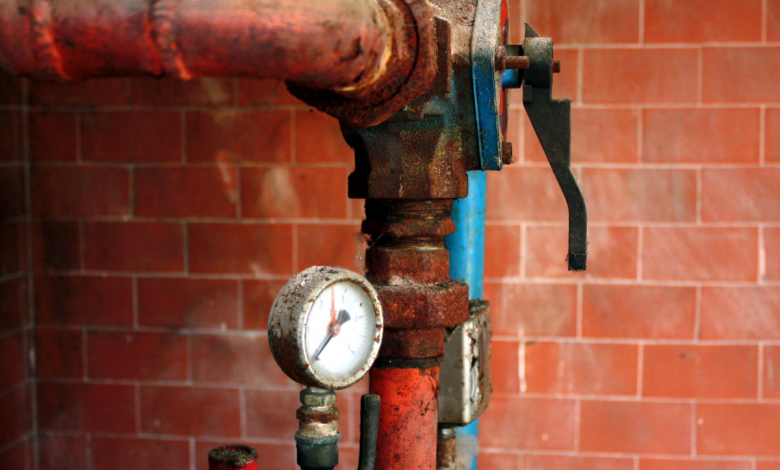Plumbing Problems You Should Watch Out for in Older Homes

Old homes are loved for their charm and character, but this does not mean that they are immune from issues like plumbing. Actually, most of the problems involving old houses are hidden and unnoticed. This is the reason doing repairs in older homes is often difficult. Unseen leaks, for example, can cause significant property damage, yet, these are not immediately resolved simply because they are not visible.
What Causes Plumbing Contamination in Older Homes?
Older homes have intricate renovation requirements, especially when beautiful details such as plaster walls and crown molding are involved. However, plumbing in these places is still as old as its original parts.
Meanwhile, plumbing supplies for older homes can have special specifications and materials that could be decades or even centuries old. Thus, when the plumbing systems become contaminated or suffer from damage, they could not be taken care of easily.
The common causes of plumbing problems in old houses include:
1. Old and Damaged Pipes
These are the main causes of water contamination in old houses. When pipes are old, they are prone to damage and hazardous waste materials such as human waste can easily mix with the water, ultimately resulting in contamination.
Sometimes, however, the reverse happens. Contaminated groundwater can enter pipe cracks when the pressure drops until it finds its way into the homes’ plumbing systems.
2. Outdated Pipes
Many older houses don’t conform to new safety regulations. Lead pipes are one example; they have been found to pollute drinking water. Galvanized steel pipes are also susceptible to corrosion. Yet, these are the types of pipes that are often found in old houses.
3. Bellied Pipeline
Older homes likely have bellied pipelines, which means that the pipes are bowed. These usually have downward bents that make it difficult for water to flow if it’s coming from the sewer line. This is a problem that should be addressed immediately.
4. Bad Plumbing Work
Old home plumbing may sometimes involve amateur work that was probably done by handymen or by homeowners who attempted to complete a DIY job many years ago. Obviously, this is not the best plumbing in the world and will likely need repairs that can range from simple to complex to plain expensive.
5. Obsolete Fixtures and Connections
Because they are old houses, the fixtures that are found inside these places are likely just as old, perhaps even older. Plumbers in Denver say that in all likelihood, these fixtures are fashioned from brass or copper, materials that can leak over time. From the faucet to the sink and further to the toilet, practically everything is in bad need of maintenance and repair.
6. Defective Sewer Lines
If the home is founded on old soil, the sewer line that runs beneath it is probably made from outdated materials and is likely defective by now. Under this condition, both the plumbing and the sewer lines are not at par with modern sanitation and safety standards and are susceptible to contamination.
Reasons To Inspect Old Plumbing System s
There are many reasons to have old plumbing checked and these include the following:
1. Restricted Water Flow
A variety of factors can lead to a drop in water pressure in old houses, including mineral buildup and deposits in the pipes.These can cause a chemical reaction which leads to bacteria accumulation. This, in turn, restricts water from flowing through the pipes.
2. Faulty Sewer Lines
Older homes are often characterized by deteriorated plumbing and sewer lines. From a pipeline perspective, the following are the commonly installed sewer lines in old structures:
-
Transite sewer pipes – These are pipes installed between the 1950s and the 70s. Their life span is only up to 70 years.
-
Cast iron sewer pipes – These pipes are found in residential properties established between 1950 and 1970. Their life span is from 70 to 100 years.
-
Clay sewer pipes – These are rare pipes which were made sometime in the 1950s, and usually last between 50 and 60 years.
-
Lead sewer pipes – These are pipes that can last for over a century but are quite dangerous.
-
PVC sewer pipes – These are pipes that have been around since the 1940s and are known for their durability.
Key Takeaway
Before you invest in an old house, it is important that you have the pipes and the plumbing thoroughly inspected. These inspections are often required in many homeowner’s insurance policies. More importantly, the checkup will help you determine if there are parts of the house that need to be repaired. The plumbing system is particularly critical as it is likely to be composed of old and damaged pipes.
If this is the case, you’ll have to get the services of an experienced plumber to have the pipes repaired. If you forego the repairs, you’re putting yourself and the house in great danger.




